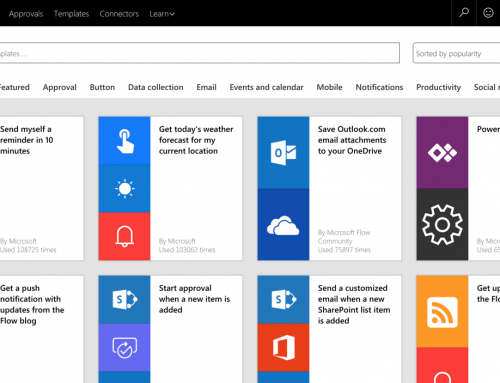Microsoft Project Server 2010 and 2013 October 2013 CU Announcement
The October 2013 Cumulative Update (CU) Announcement for Project 2010 and Project 2013, and Project Server 2010 and Project Server 2013 is now released.
Thanks Brian Smith and the Microsoft Support Team for the following blog post:
I am very pleased to announce the release of the October 2013 Cumulative Update (CU) for Project, Project Server and SharePoint for 2010 and 2013. Feel free to open a support case if you have any questions around this or need assistance getting these patches deployed. Remember that this release for the 2010 products, like all CUs since the August 2012 Cumulative Update, has a hard requirement on Service Pack 1 – see notes below. In most of the KB articles the term hotfix is used in place of Cumulative Update. They tend to be interchangeable terms – a Cumulative Update is just a hotfix built to a schedule. I should also point out that the individual Project Server packages are only ‘individual’ in the sense that they do not include the SharePoint patches – they are still cumulative and the October CU will contain all previous CU releases (at least back to the applicable baseline Service Pack (SP1 for 2010 and March PU in the case of Project Server 2013).
An important point for Project Server 2013, as was the case also for the April, June and August CU, is the requirement to load the March 2013 Public Update. Another important point to add here is that there was an issue with running the SharePoint Configuration Wizard on a server with Project Server 2013 installed – this is fixed by applying the April or June CU – so a good practice would be to load the March PU, then the October CU and then run the configuration wizard (if you didn’t already load the April, June or August CU).
Finally, the October 2013 CU for Microsoft Project and Project Server 2010, can be installed with Microsoft Project and Project Server 2010 SP2 – and overcomes the issues seen with the August 2013 CU under certain conditions where the database upgrader would fail.
Project and Project Server 2013
This include a number of fixes, so Microsoft strongly recommends that you test this in a test environment based on your production environment before putting this fix live in production.
The article below provides information on how to deploy the Project Server Cumulative Update.
You can read about the fixes included in the Project and Project Server August CUs from the following articles:
Project Server 2013 Server Rollup Package (recommended):
Description of the Project Server 2013 cumulative update package (Project server-package): October 2013 – not released just yet – more information later **** Update 12/2/2013 – this package will not be released – you can however load the Project Server package listed below and the SharePoint package http://support.microsoft.com/kb/2825647 to achieve the same fixes. ***
http://support.microsoft.com/kb/2825650
Project Server 2013 Individual Project Package – (cumulative, but only the Project Server fixes):
Description of the Project Server 2013 hotfix package (Projectserverwfe-x-none.msp): October 8, 2013
http://support.microsoft.com/kb/2825659
This CU does not update the Project Server database – so no version change unless you are updating from pre- August 2013 CU – in which case you will see the same as you would if loading the August CU – version 15.0.4525.1000 – and in 2013 with just one database the table to look in is dbo.Versions. The Versions tables in the other schemas are empty.
Project 2013 Client Package:
Description of the Project 2013 hotfix package (Project-x-none.msp): October 8, 2013
http://support.microsoft.com/kb/2825651
The client version number will be 15.0.4551.1001 if you want to restrict the client version that can connect to the server. It would appear the server version is also at this same level if you load the October 2013 CU so no problems controlling versions with this number. See Project Server 2013- Controlling the version of connecting clients–and PWA edits- for more details – this was an issue with the August CU – and could also catch you out if you haven’t patched your server but try and control the client to October 2013 CU.
We are working on the specific CU installation options for 2013, but the process hasn’t changed from 2010 – so if you are familiar with 2010 patching or read the 2010 instructions below you should be good to go.
Also note that Click to Run installations will be automatically patched, usually within a month. Installations in Enterprise Environments that have been modified will be deployed based on the schedule determined by your Administrator.
Project and Project Server 2010
This include a number of fixes, so Microsoft strongly recommends that you test this in a test environment based on your production environment before putting this fix live in production.
The article below provides information on how to deploy the Project Server Cumulative Update.
You can read about the fixes included in the Project and Project Server August CUs from the following articles:
Server Rollup Package(Recommended):
Description of the Project Server 2010 cumulative update package (Project server-package):October 8, 2013
http://support.microsoft.com/kb/2825793
Individual Project Server Package (Cumulative – but only the Project Server patches):
Only required if you do not install the Server Rollup.
Description of the Project Server 2010 hotfix package (Pjsrvwfe-x-none.msp): October 8, 2013
http://support.microsoft.com/kb/2825803
The Project Server databases will be updated to version 14.0.7110.5001
Project 2010 Client Package:
Description of the Project 2010 hotfix package (Project-x-none.msp): October 8, 2013
http://support.microsoft.com/kb/2825812
The client version number is 14.0.7109.5000, in case you want to limit the connection of certain patched release to Project Server 2010.
More information on deploying the Cumulative Update:
The article below provides information on how to deploy the Project Server Cumulative Update.
Updates for Project Server 2010
http://technet.microsoft.com/en-us/projectserver/gg176680.aspx
As Project Server 2010 is now based on SharePoint Server 2010 we strongly recommend that you install the Project Server 2010 Server Rollup Package as there are a large number of individual server packages for SharePoint Server. The Project Server 2010 Server Rollup Package contains all the patches released in this Cumulative Update for SharePoint Foundation Server 2010, SharePoint Server 2010 and Project Server 2010.
As mentioned above, and at http://blogs.msdn.com/b/brismith/archive/2012/07/18/project-server-2010-from-august-2012-cumulative-update-onwards-you-will-also-need-to-load-sp1.aspx – the August Cumulative Update requires your client and server to already be at the Service Pack 1 (SP1) level – if you get a message saying the patch does not apply to your system then this may be the reason.
SP1 for the Project Server 2010 can be found at http://www.microsoft.com/en-us/download/details.aspx?displaylang=en&id=26636
SP1 for the Project Professional 2010 client can be found at http://www.microsoft.com/en-us/download/details.aspx?id=26635 for the 32-bit and http://www.microsoft.com/en-us/download/details.aspx?id=26627 for the 64-bit.
Client Installation:
The instructions for installing the client patch are below.
NOTE: Microsoft strongly recommends testing within a NON-Production environment prior to rollout.
1. Download the hotfix from the link in the KB Article.
2. Extract the patch package by running the .exe file that you downloaded.
3. Run the extracted .exe file to apply the patch to your Project Professional/Standard client.
Project Server 2010, project 2010, Cumulative Update, Project 2013, Project Server 2013
PPM Works is a full service Microsoft Project and Portfolio Management consultancy, focused on Microsoft Project Server and Microsoft SharePoint platforms. We believe in partnering with our clients to exceed expectations and build long lasting rewarding partnerships. We are continuously building a knowledge base of multiple tips, tricks and solutions to make your use of Microsoft Project Pro as quick and easy as possible. Contact us for more information.
Stay updated with the latest of Project Online/Server 2013 with us: Subscribe. Check our future events!
Subscribe to our webcast email list for updates on our upcoming webinars!
Visit our FAQ Page for access to our tool box.




